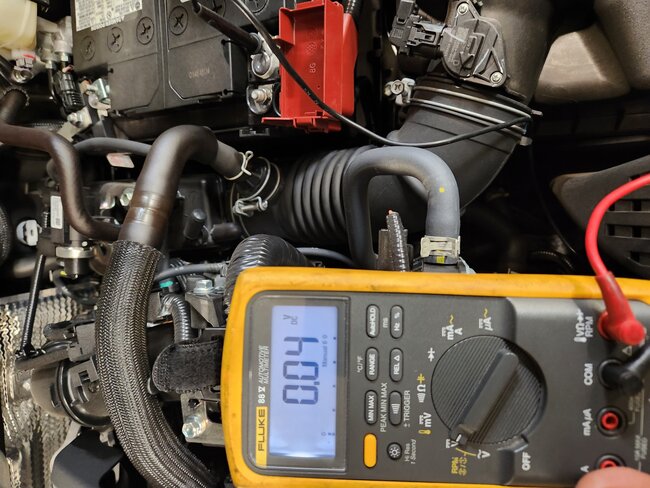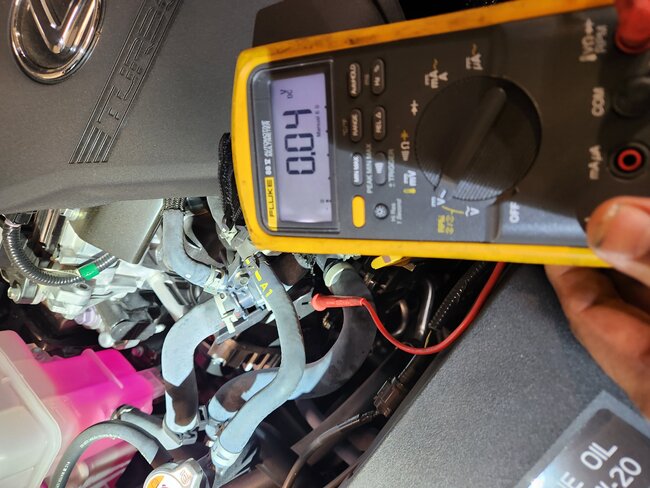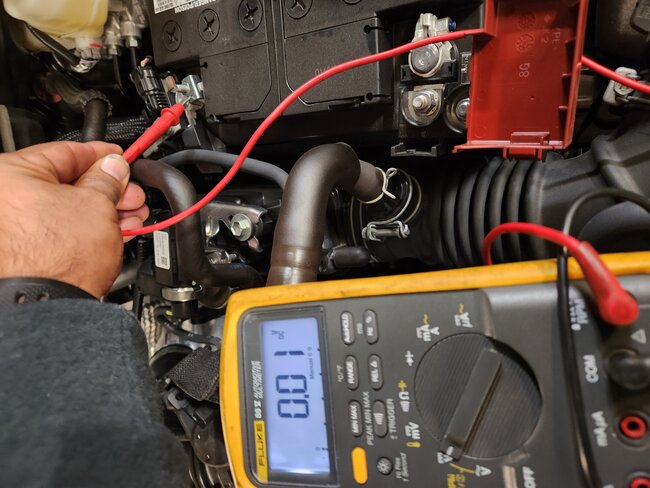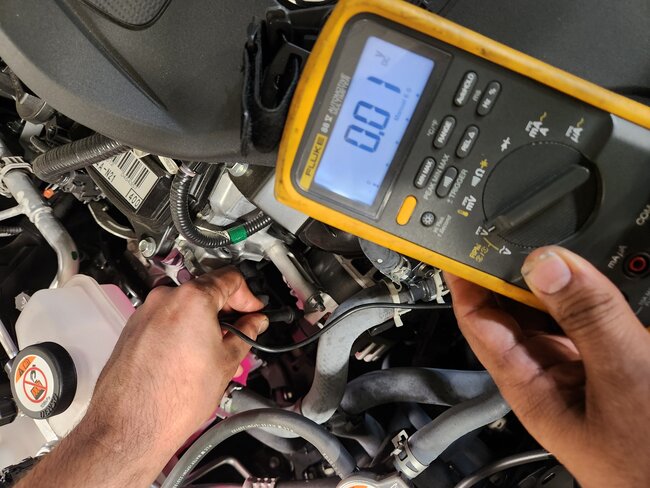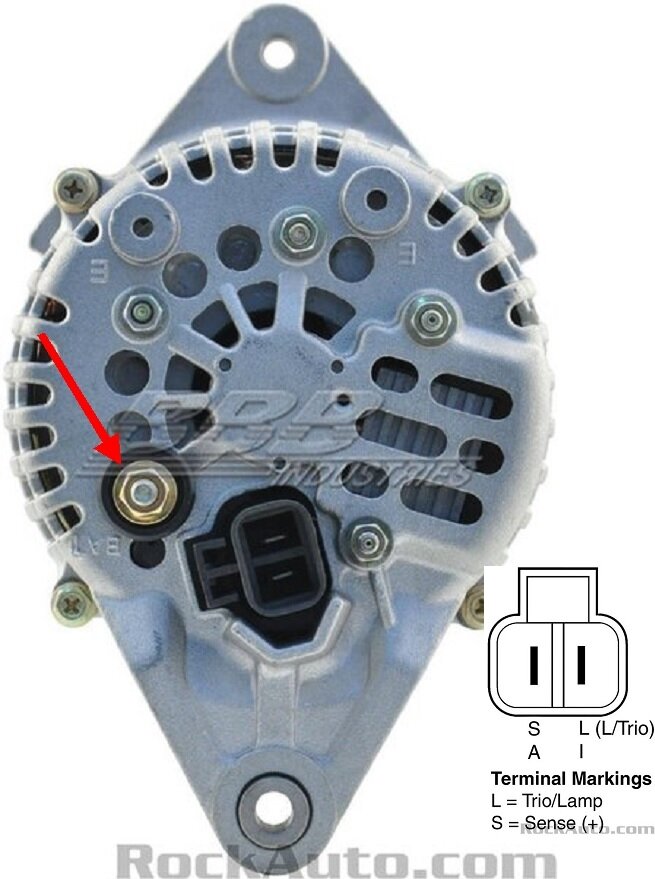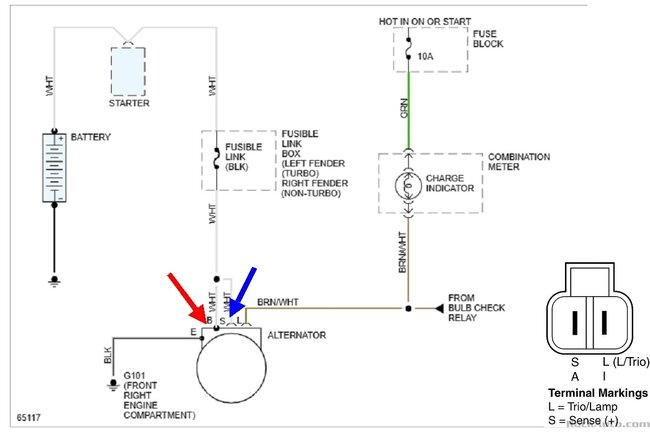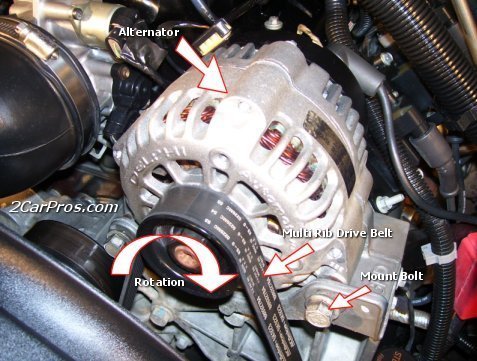Hmmm. Not sure why my reply got posted twice. Oh well.
Are you saying you found 12.6 volts between the generator's housing and the battery's negative post? If that is so, a ground cable is needed between the case and the engine block or the generator's mounting bracket. That voltage is supposed to be 0 volts. The only other way to find battery voltage on the housing is to have a disconnected or badly corroded negative larger battery cable, but that is also needed for the starter motor. If that cable was the problem, the engine wouldn't crank or run.
Next, you found, for all practical purposes, 0 volts during that test, which IS acceptable. Please clarify where you're putting the voltmeter's probes and the readings you get.
Also tell me what you're finding for battery voltage so I can use the correct numbers and avoid confusion. It should be very close to 12.6 volts if it is good and fully charged. If it's closer to 12.2 volts, it's good, but fully discharged, possibly to the point it won't crank the engine fast enough to start.
Does the "Battery" light on the dash turn on when you turn the ignition switch to "run"?
As for those two plugged-in wires, if everything else checks out okay, we may need to look at those. The first thing is to unplug the connector, then pick the terminals so they make a tighter contact. The smaller white wire in that plug provides the current to run the internal voltage regulator and the generator's field coil. If that terminal is spread or corroded, the voltage regulator will not turn on and the generator won't provide any output.
If the brown / white wire has a spread or corroded terminal, the voltage regulator will not receive its turn-on signal from the "Battery" light circuit. Normally the clue there is that warning light doesn't turn on when you turn on the ignition switch. I don't know what Nissan did with the bulb-test relay or if that would mask that important clue. If that warning light does turn on, tell me when or under what conditions, than I would remove that relay for the remainder of the diagnosis. That relay does not appear to be involved in running the charging system, so we want to eliminate anything that can give us misleading results.
Another way to approach that plug is to disconnect it so you can reach the terminals with the voltmeter's probe. Leave that relay out. You should find full battery voltage on the terminal for the white wire all the time. There should be at least 12 volts on the brown / white wire only when the ignition switch is in "run". Testing this way with the plug disconnected has serious drawbacks and is by far, the least preferred way to do it. If you come up with a voltage that is missing, that is conclusive and tells us which circuit needs further diagnosis. It's when you come up with the correct voltage that there's still a question. These voltages are only valid when the connector is plugged in and both terminals are making good contact.
This is best observed on the brown / white wire. With the break in the circuit by being unplugged, no voltage will be "dropped" across the warning bulb, so it will be off. The full 12 volts will show up at the connector, even if just one tiny strand of wire is still intact when all the others are corroded off. Consider sticking a paper clip into the back of that terminal and perhaps attaching a small clip lead, (jumper wire), to it that you can reach with the voltmeter when that connector is plugged in. Once plugged in, that 12 volts is going to drop to around two volts. That is the accurate reading and it means the other ten volts is being dropped across the warning bulb, so it will be lit up. That also means there's current flowing through that circuit. That's what wakes up the voltage regulator causing it to start running the generator.
There's one more, rather elusive and uncommon thing to consider when everything else appears to be okay. That would be the brown / white wire is shorted to ground. Most often that's due to a wire harness that fell down onto hot exhaust parts or is laying on the sharp edge of a metal bracket. When that wire is grounded, (shorted to ground), the "Battery" light will be lit up anytime the ignition switch is in "run", and the voltage regulator will see 0 volts on that turn-on circuit. That short can also be right at the connector terminal, but that's even less common. If that wire is grounded somewhere other than right at the connector, the light will stay on when that connector is unplugged. This, again, is where you'd want to have that bulb-check relay unplugged so it can't cause misleading results.
Let us know what you find.
Monday, February 6th, 2023 AT 1:46 PM
